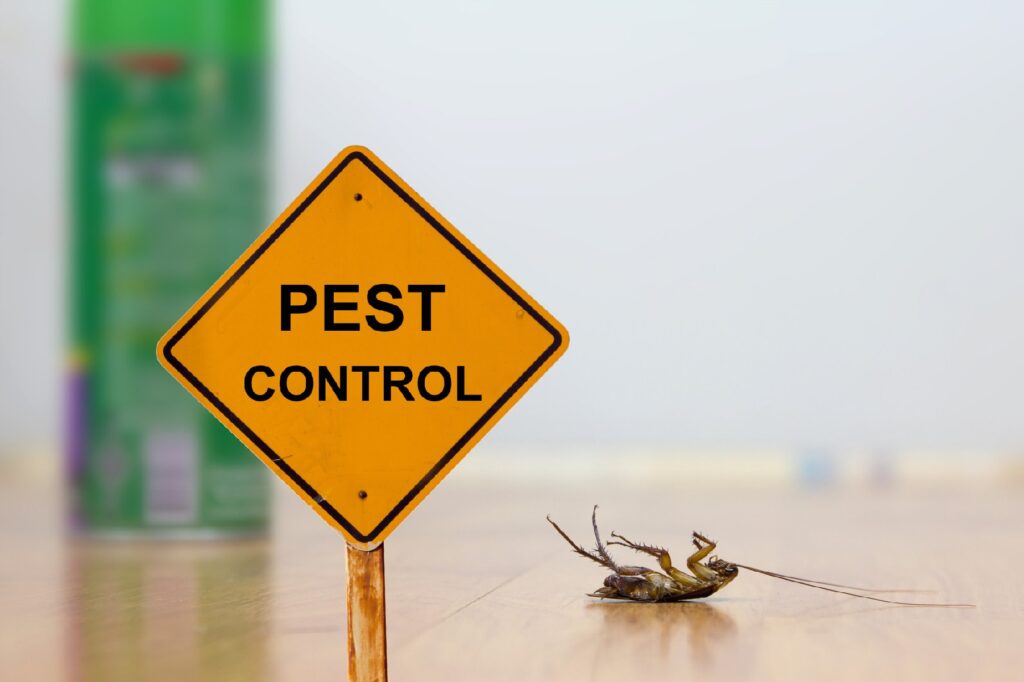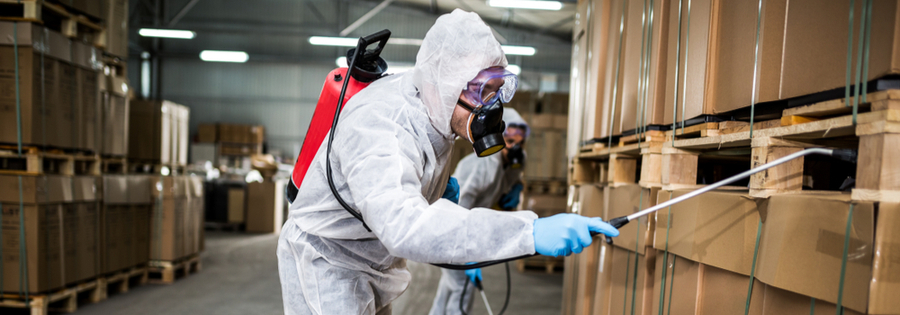A Comprehensive Guide to the Different Kinds Of Pest Control Techniques
Pest control is a crucial aspect of preserving a healthy and balanced and comfortable atmosphere, whether it remains in our homes, gardens, or offices. With the myriad of pest control techniques readily available, it can be overwhelming to locate the most effective remedy for a certain parasite trouble. From chemical and organic techniques to physical and all-natural options, each method has its very own one-of-a-kind toughness and restrictions. In this comprehensive overview, we will check out these different kinds of parasite control approaches, supplying insights into their applications and benefits. By the end, you will certainly have a clearer understanding of which approach might be the ideal suitable for your pest control requirements. Allow's dive right into the interesting world of insect control and uncover the tricks to a pest-free setting.
Chemical Insect Control Techniques

One common type of chemical insect control is pesticides. Insecticides target particular pests, such as mosquitoes, termites, or ants, and can be used both inside and outdoors.
One more type of chemical pest control is rodenticides. These are chemical compounds developed to control populations of rodents, such as rats and mice.
Herbicide, also called herbicides, are an additional kind of chemical pest control method. Herbicides are created to selectively kill undesirable plants, known as weeds, without triggering damage to desirable plants. They are commonly used in farming, landscape design, and horticulture to regulate the growth of undesirable plant life.
While chemical pest control techniques can be very reliable in getting rid of bugs, it is essential to use them deliberately and follow safety and security guidelines. Overuse or misuse of chemical pesticides can have adverse influence on human health and the atmosphere. It is critical to utilize these techniques responsibly and consider alternate bug control methods whenever possible.
Organic Insect Control Techniques
Organic parasite control approaches entail making use of living microorganisms or all-natural compounds to handle and manage pest populaces. Unlike chemical approaches, which commonly rely upon synthetic chemicals, biological control methods use the all-natural opponents of pests to regulate their populaces. This technique is taken into consideration more eco-friendly and sustainable, as it decreases making use of dangerous chemicals and lessens the threat of chemical resistance.
One widely utilized organic bug control approach is the intro of natural killers or bloodsuckers. For instance, ladybugs are presented to control aphids, while particular wasp species are released to target caterpillars. These predators and parasites eat parasites, minimizing their numbers and protecting against infestations.
One more biological control method is making use of microorganisms. Specific germs, infections, and fungis can be utilized to contaminate and kill specific parasites. The microorganism Bacillus thuringiensis is typically utilized to control caterpillars, as it creates contaminants that are lethal to these pests.
Biological control approaches can likewise involve making use of pheromones or all-natural materials that interfere with the breeding patterns of insects. By interfering with their recreation, these methods aid to lower pest populaces over time.
While organic insect control methods are generally reliable, they may require longer durations to achieve preferred results contrasted to chemical techniques. Additionally, careful consideration should be provided to the choice and release of natural adversaries to stop unintentional injury to useful organisms or ecosystems.
Physical Bug Control Approaches
To efficiently handle and regulate pest populaces, different insect control methods known as physical parasite control techniques are utilized. Another physical bug control approach is the installation of fences or walls to keep bigger parasites, such as deer or bunnies, out of yards or agricultural fields. Physical bug control approaches are an eco pleasant choice to chemical pesticides, as they do not rely on the use of dangerous chemicals.
Natural Parasite Control Techniques
Natural insect control methods supply a sustainable and environmentally friendly approach to managing and removing parasites. These methods focus on the use of all-natural substances and biological agents, reducing the need for chemical pesticides that can damage the atmosphere and human health. One of the most typical all-natural insect control techniques is biological control. This includes introducing all-natural killers or bloodsuckers to exploit or parasitize the parasites. Ladybugs are typically introduced to gardens to manage aphid populations. One more natural approach is the usage of repellents originated from plants. Particular plants, such as marigolds, lavender, and pepper mint, discharge fragrances that repel insects like mosquitoes, flies, and ants. Furthermore, cultural control practices can be employed to prevent and take care of pest invasions. This includes correct hygiene, regular upkeep, and advertising biodiversity in the yard. For instance, rotating crops, removing garden debris, and motivating all-natural predators can help protect against the accumulation of parasites. By taking on these natural bug control approaches, people and neighborhoods can effectively manage bugs while decreasing the negative effect on the environment and human health.
Integrated Parasite Monitoring (IPM)
Integrated Bug Monitoring (IPM) is an extensive and organized approach to pest control that incorporates different techniques and techniques to successfully handle pests while reducing using chemical pesticides. IPM intends to keep pest populations below the financial injury degree by utilizing a combination of cultural, biological, and chemical control techniques.
Cultural control methods include customizing the atmosphere to make it much less favorable for bugs. This can consist of methods such as crop rotation, proper cleanliness, and making use of immune plant varieties. By producing undesirable conditions for parasites, cultural control techniques can considerably lower insect populations.

Chemical control methods are utilized as a last option in IPM. They visit here involve the targeted and wise usage of pesticides to take care of pest populations. Unlike conventional parasite control techniques, IPM aims to minimize making use of chemical pesticides by utilizing different strategies.
Integrated Parasite Management (IPM) is an aggressive strategy that focuses on lasting pest monitoring instead of counting only on responsive steps. By incorporating several control approaches, IPM offers an extra sustainable and environmentally friendly method to pest control.
Conclusion
Finally, this article has actually provided a detailed review of the different kinds of parasite control techniques. It went over chemical, organic, physical, and all-natural pest control methods, in addition to the incorporated bug monitoring strategy. By comprehending these numerous look at this web-site techniques, individuals can make educated decisions on which bug control technique is most appropriate for their particular requirements and choices. Efficient bug control is vital in maintaining a healthy and pest-free atmosphere.